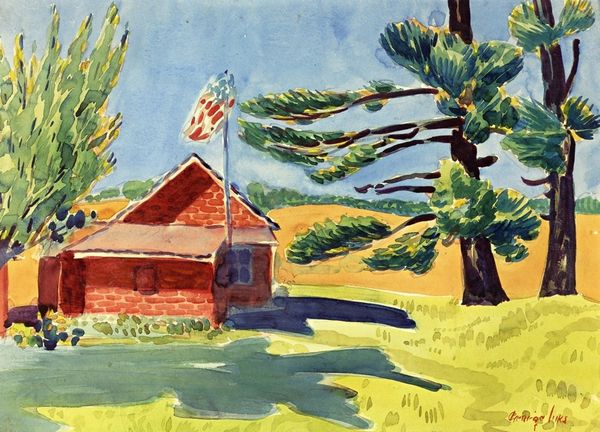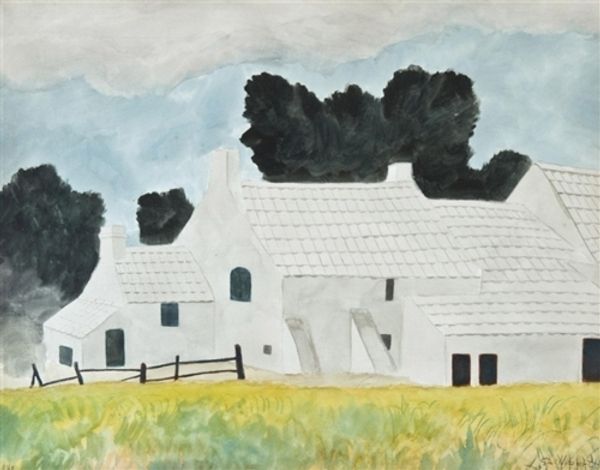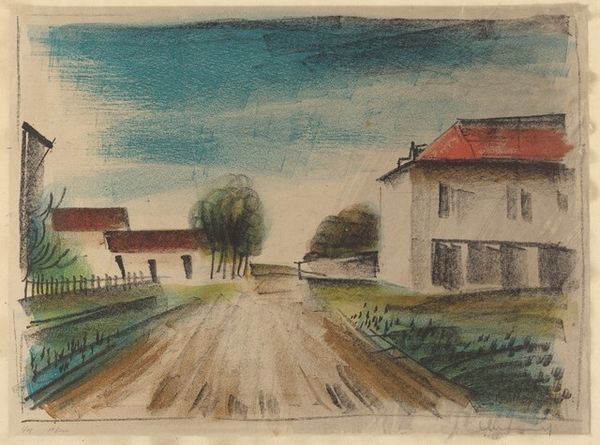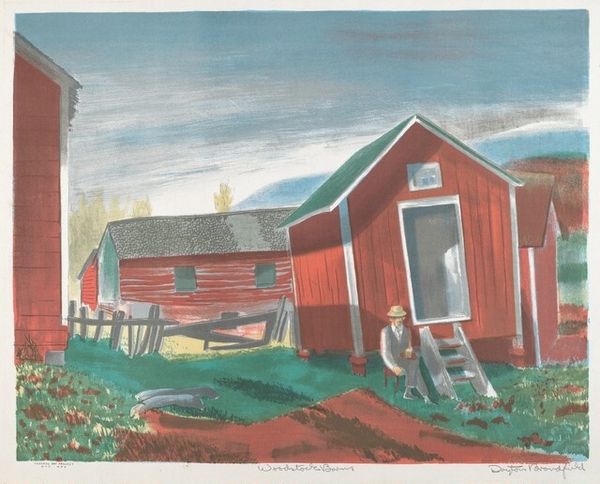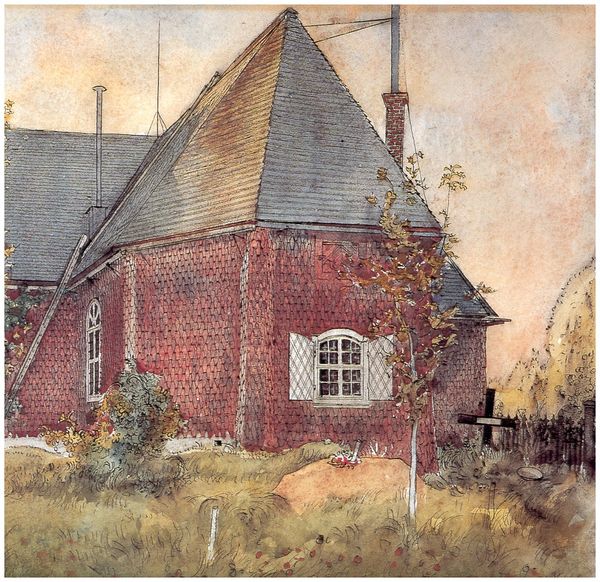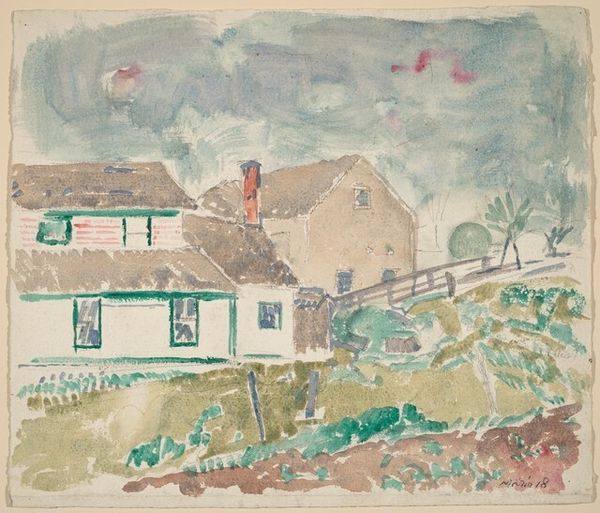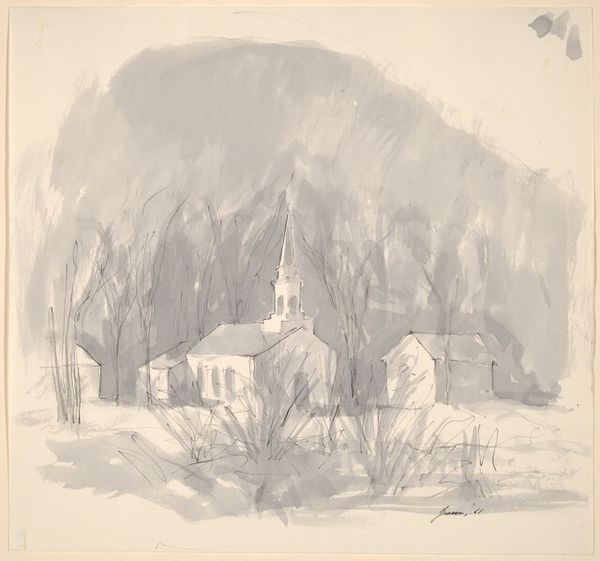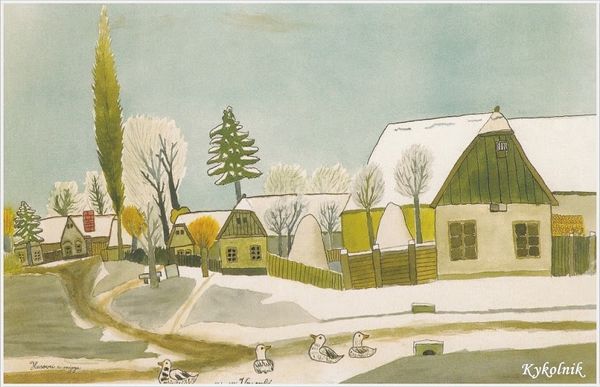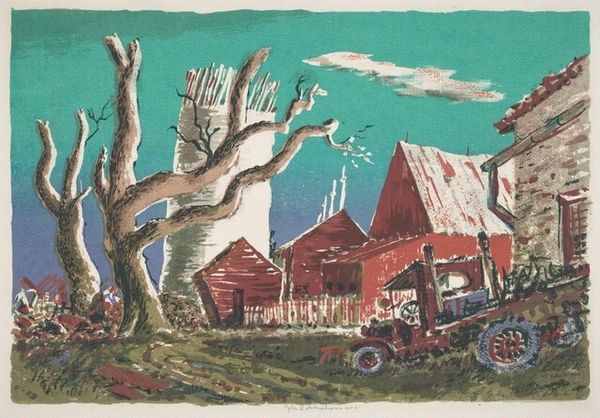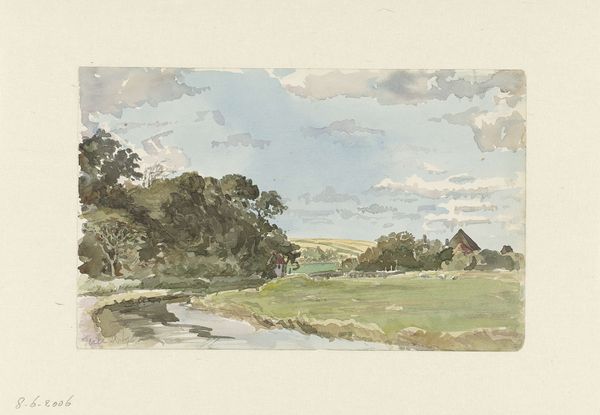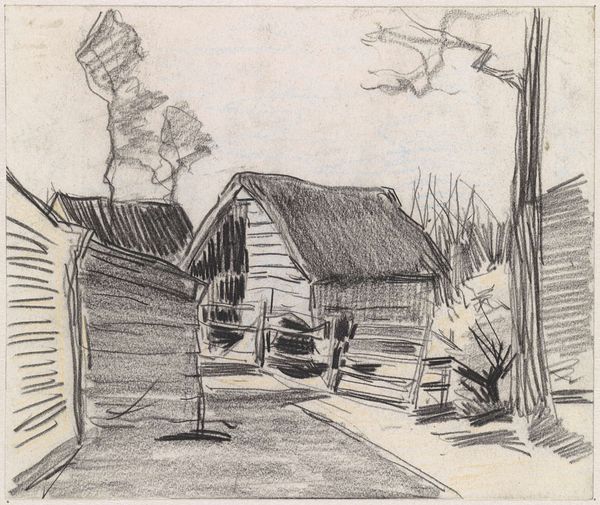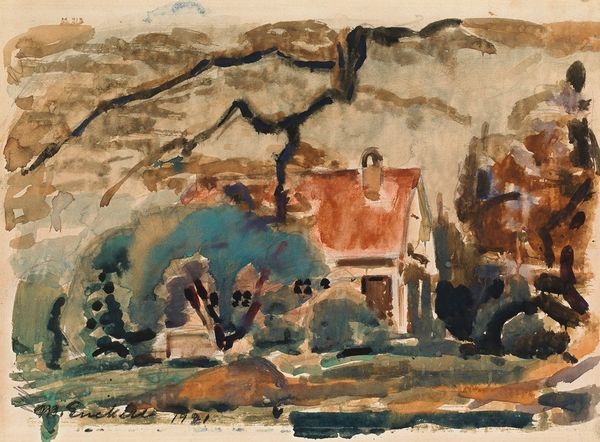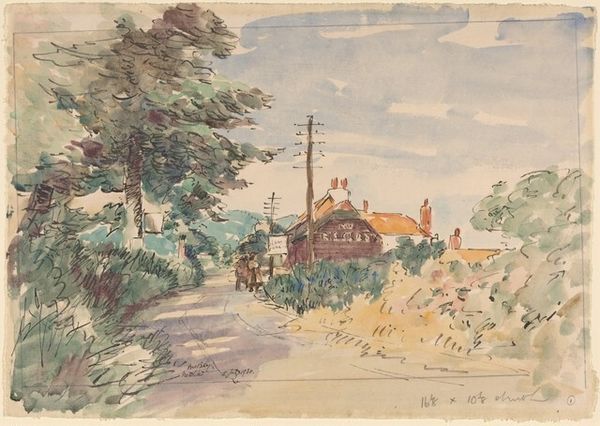
Copyright: Public domain US
Editor: This is "Das Rote Haus" or "The Red House" by Erich Heckel, from 1922, done in watercolor. The colors seem quite vibrant, almost clashing, especially the red and green. What stands out to you in terms of its production? Curator: What immediately grabs me is how Heckel, deeply involved with the "Die Brücke" group, is grappling with materiality and the very means of production. Consider the context: post-WWI Germany, resources are scarce. Watercolor, compared to oil, is far more accessible, less demanding in terms of preparatory labor, and can be executed more quickly. Editor: That makes sense. So the choice of watercolor is tied to social realities. Curator: Absolutely. And look at his application. Broad, seemingly hasty strokes. This isn’t about meticulous representation, but about capturing the feeling, the essence, perhaps even the struggle inherent in rebuilding after devastation. Is this rendering efficiency indicative of the socio-economic state influencing artistic creation? Editor: It's interesting to think of the "hurried" feel as a deliberate artistic choice, but also one born out of necessity. Like, less labor = more art in tough times? Curator: Precisely. Heckel isn't just depicting a house; he’s also indirectly revealing the constraints and creative responses fostered by a particular socio-economic landscape, don't you agree? Editor: Definitely. I’d never considered watercolor as potentially carrying that kind of social weight. Thanks for pointing out those connections between materials and the conditions that shape art-making. Curator: It reveals how resourcefulness shapes art, which informs how art is not created in a vacuum, doesn’t it?
Comments
No comments
Be the first to comment and join the conversation on the ultimate creative platform.
